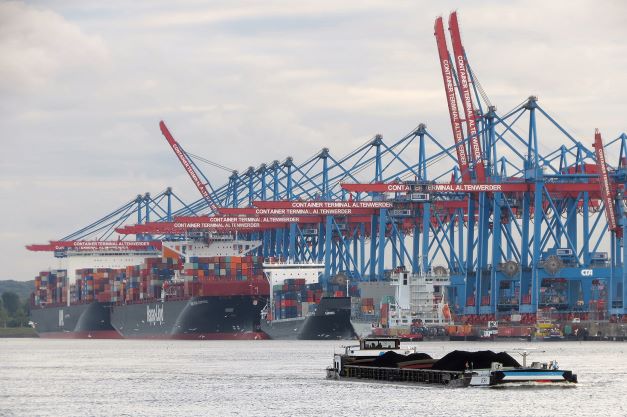Experts see silver lining beyond container chaos
1st July 2022

Congestion of container ships on the North Sea, expensive drayage transport, container shortage: the German economy has been groaning under these conditions for some time. There is no relief in sight in the short term, but in the long run. Although the supply chain experts of the Bochum-based software company Setlog assume that the effects of the current crisis will last well into 2023, they forecast decreasing ocean freight rates in the fourth quarter of 2022.
An analysis of 80 Setlog customers and brands from June 22 also shows: Importers of fast-moving consumer goods learned from their misery and now order their desired products on average one week earlier than they did in 2020 and before the coronavirus pandemic, thus reducing delays. Another outcome of the analysis: they are not shifting their production from the Far East to Europe.
The aftermath of the Shanghai lockdown, cancelled departures of container ships and the strikes in some German ports are causing serious problems for the economy: According to the Kiel Institute for the World Economy (IfW), container ships with a capacity of around 150,000 standard containers are waiting to call at Bremerhaven and Hamburg in the German Bay alone. The situation is even more dramatic off the ports of Rotterdam and Antwerp.
“The consequences are not only delays but also a shortage of containers. Switching to smaller ports is problematic because they lack space and a strong infrastructure for transports to the hinterland. If rail is not an alternative, expensive direct transport by truck remains the only option,” reports Ralf Duester, member of the Setlog board.
Logistics service providers also face the problem of not being able to ramp up their capacities due to the lack of staff. Duester does not expect an improvement in ocean freight rates in the short term – but in the long term from the fourth quarter of this year if the ship owners also play along.
Patrick Merkel, managing director of Prologue Solutions, agrees: “Inflation, the shift in interest rates and high prices in various sectors suggest that rates will fall.” Due to the geopolitical situation and the consequences of the Coronavirus pandemic, logistics service providers tend to expect less business in the coming half-year. Shippers are also benefiting from ship owners that have built up more capacity.
Due to this tense situation, according to the Setlog analysis, the transit time of ocean freight from the Far East to the western ports took an average of 42.5 days. For comparison: in 2021 it was 41.6 days, in 2020 around 35. Before the pandemic (2019), the transit time was 31 days. In the past two years, up to 30% of goods were late due to lockdowns, production delays and long transit times, according to Setlog. However, buyers of fast-moving consumer goods managed to push the proportion of goods arriving late down to three to five per cent compared to the pre-Covid period in bringing orders forward by an average of one week.
While some industries are considering dual production for sensitive goods and components, as well as re-shoring and near-shoring, the analysis shows that specialists for fast-moving consumer goods did not relocate production to Europe or Germany. Only one to two percent of their total volume of apparel is produced in Eastern Europe or North Africa – this has not changed since the beginning of the pandemic. Turkey’s share is also constant at about 11.5%, China’s at 11.0%. However, suppliers in Bangladesh and Vietnam were able to get more business. Bangladesh’s share rose from 28.0% to 32.0% during the pandemic, Vietnam’s from 4.5% to 7.3%.
The consequences of Covid-19 apparently led to a change in some companies. They are investing in strategies and systems to increase the availability of goods and to be able to react more flexibly overall to unplanned changes in the supply chain. “More and more companies are coming to us to learn how to use software to get more transparency in the supply chain and to inform all partners about changes in almost real time,” Duester reports.
“For these managers availability and resilience now count more than cost savings.” He knows companies that make a point of ensuring that products or components must be available in dual sourcing – at every location. “Companies will soon no longer evaluate buyers according to cost savings, but intensify other criteria,” the Setlog manager predicts.

